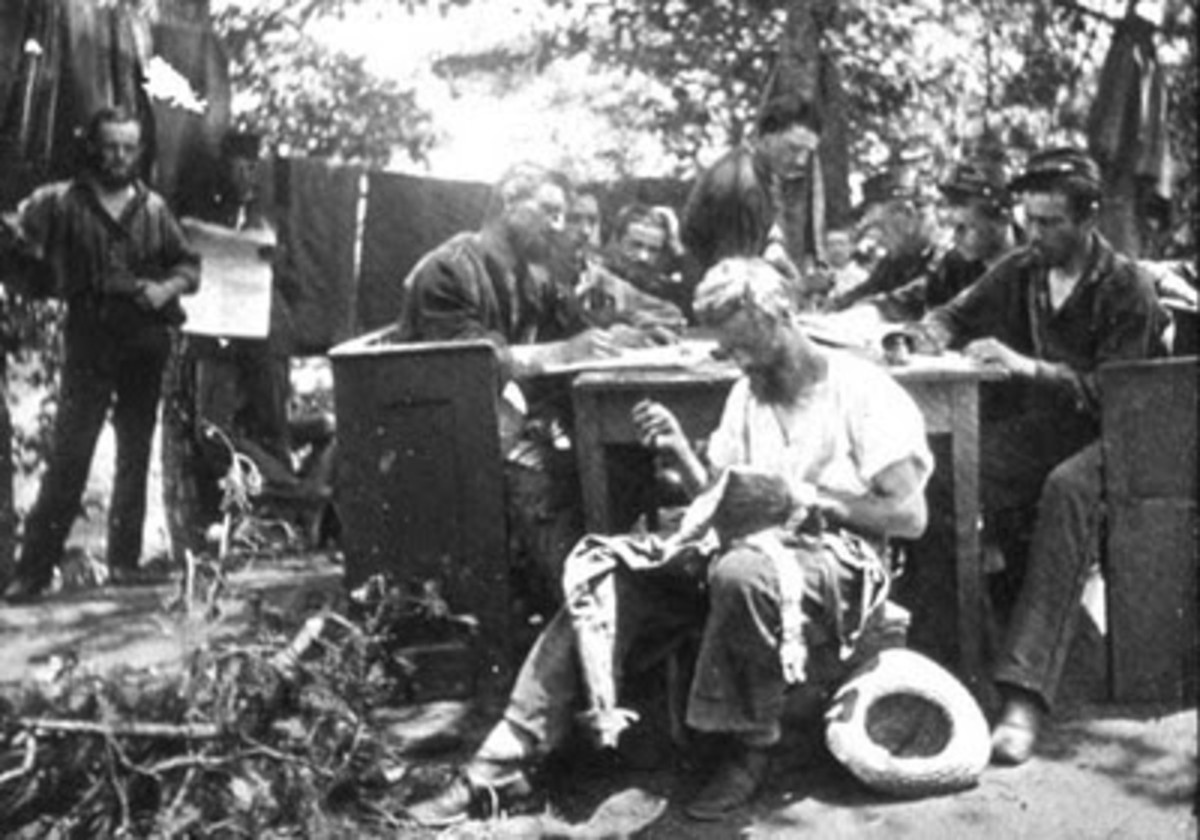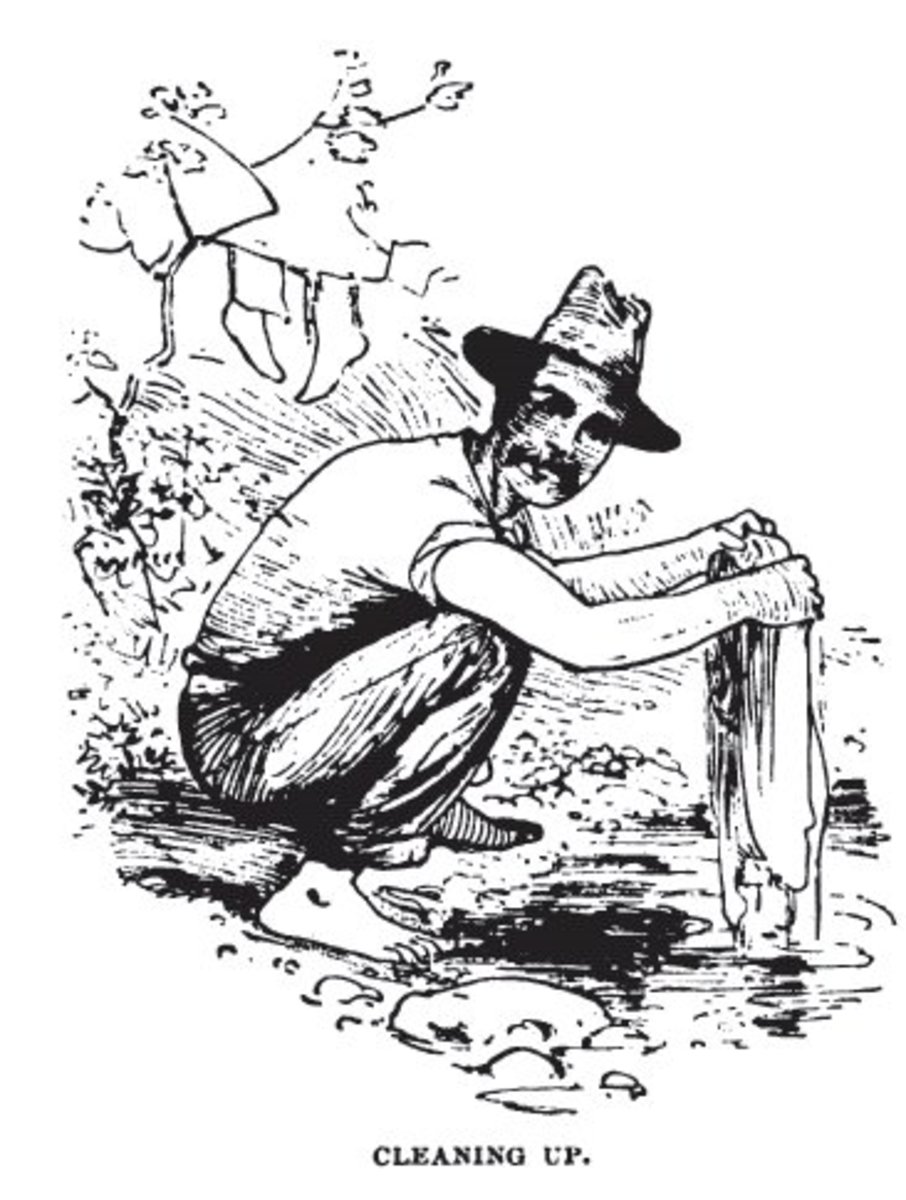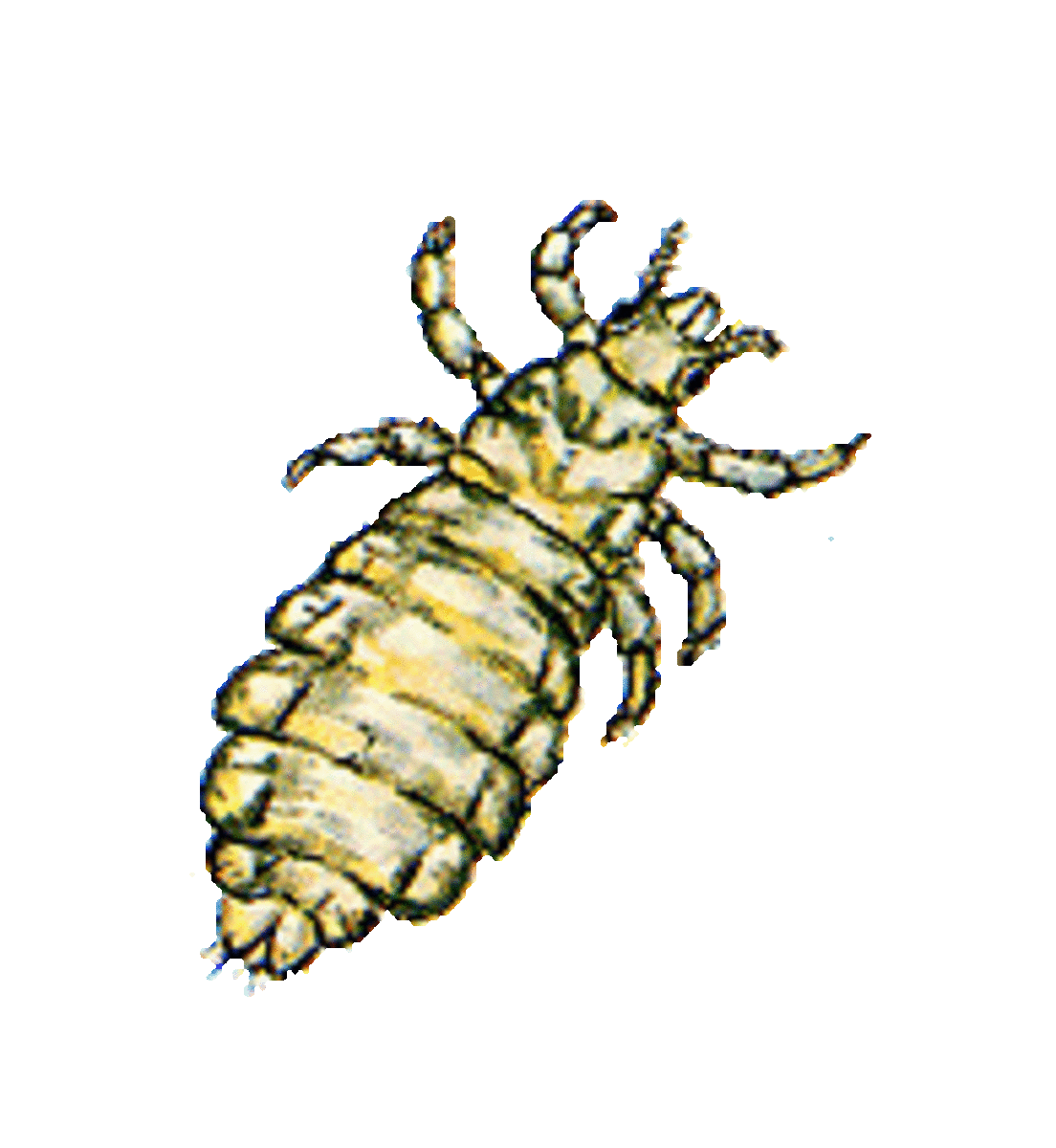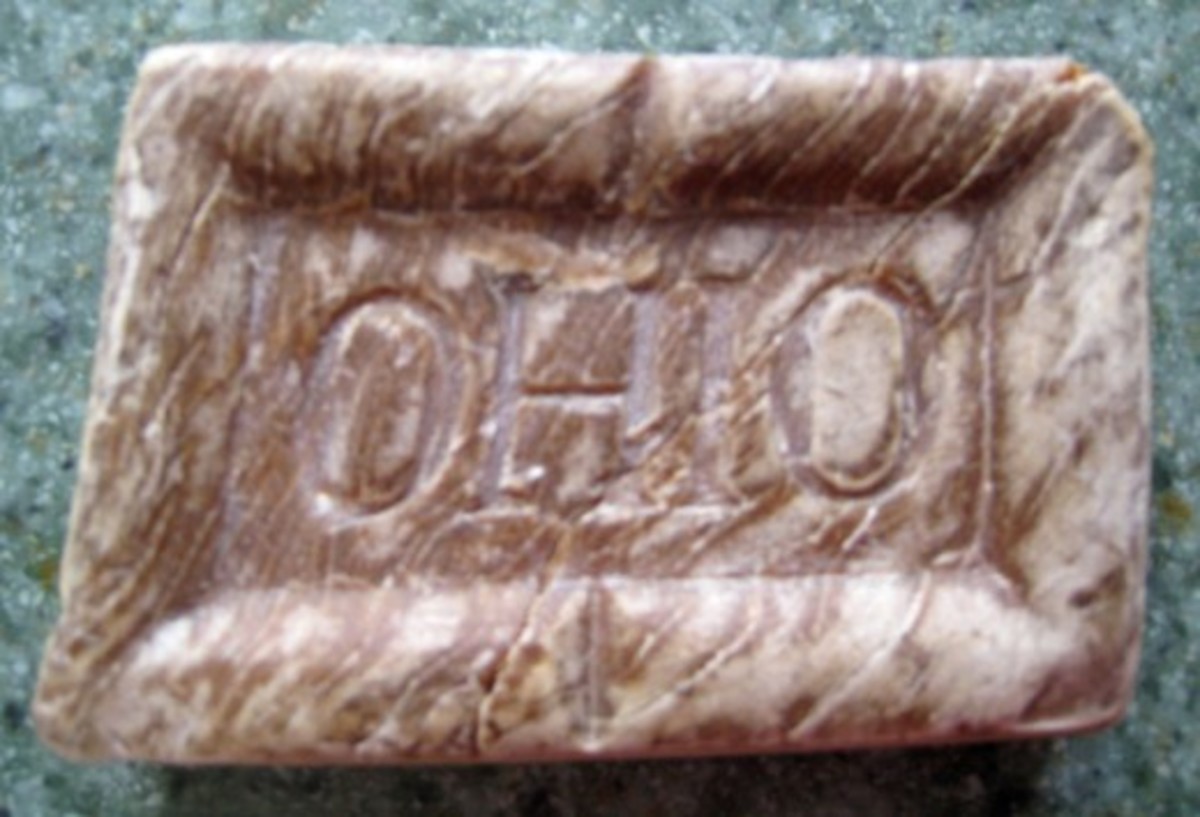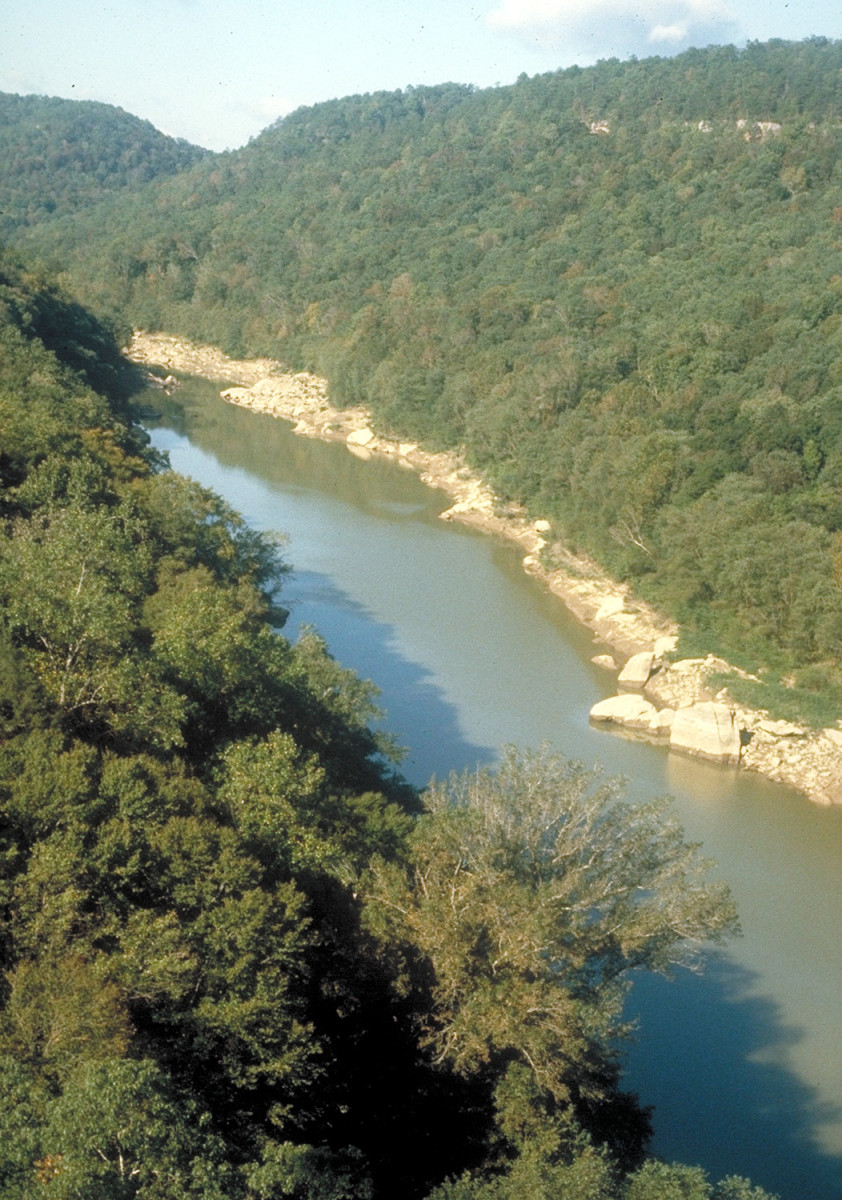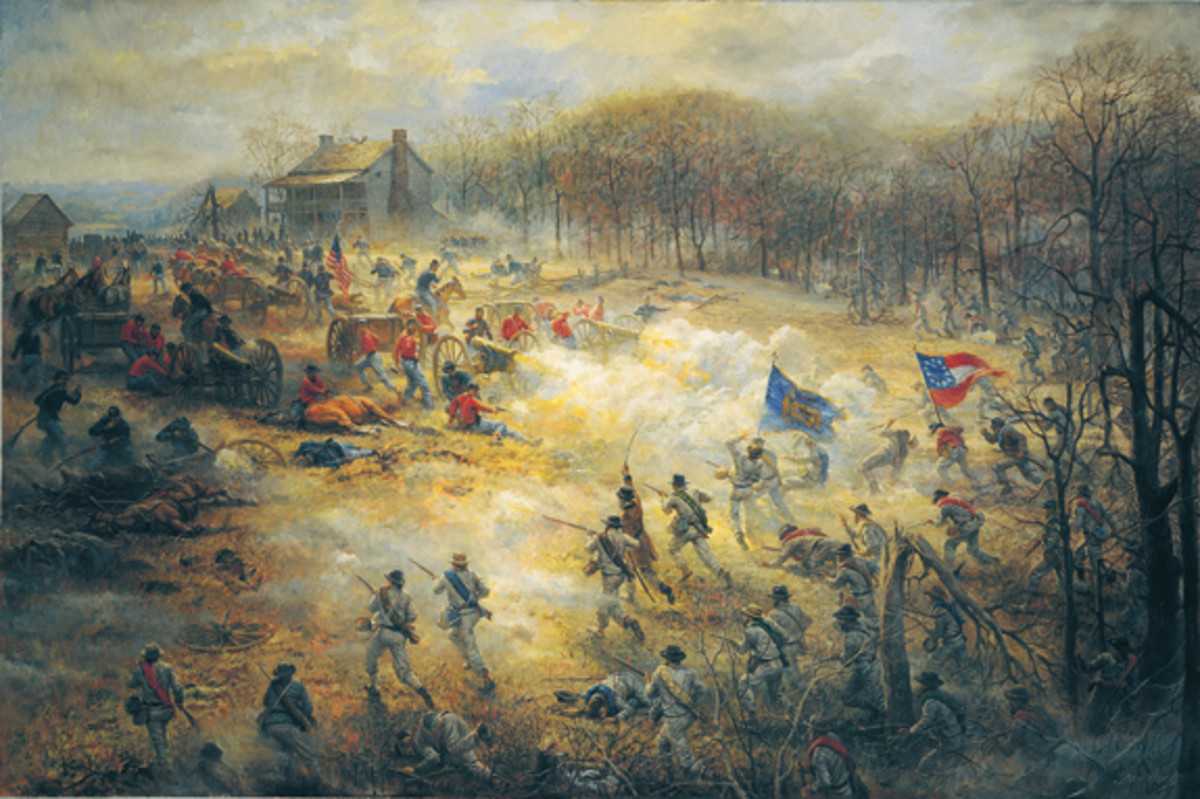- HubPages»
- Education and Science»
- History & Archaeology»
- History of the Americas»
- American History
American Civil War Life: Union Infantryman - Life In Camp 1
Dear Brother…:
We’ve had pretty spicy times in camp for a week or ten days…
The boys resort to all sorts of expedients to kill time. A good many of them are making clam-shell rings…
I spend a good deal of time in the river. I am improving some in swimming. Swam across the other day at the widest point in sight. Some of our company found the body of a man in the river the other day. He appeared to have been in the water a long time. He was standing erect with his feet firmly bedded in the bottom, and his head about two feet under water. One of the feet broke off in pulling him up…
Don’t fail to write again soon… Direct to Camp Wright, Hulton, care of Captain D. W. Hutchinson…
- Oliver Wilcox Norton, 83rd Regiment, Pennsylvania Volunteers, 1861
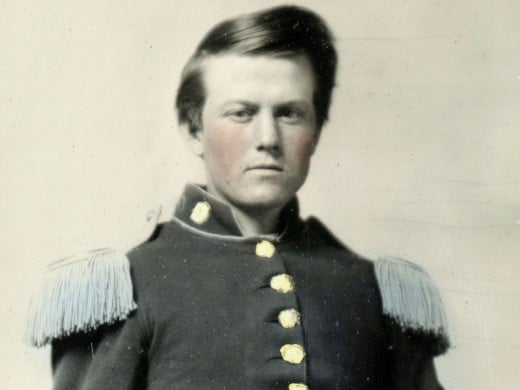
Introduction
This series is the first of two on the Union Infantryman.
While soldiers in any war are well known for the fighting they did, a majority of their time in military service was spent not on the battlefield, but in camp. This fact easily applies to the Union Infantryman in the American Civil War.
It was in camp that American Civil War soldiers often got their first tastes of military life, and it was in camp that they learned the soldier’s trade. It was also in camp that soldiers met foes just as deadly, if not deadlier, than enemy forces – disease, malnutrition, and poor sanitation.
In this series, we will learn the strictly regimented, and often mind-numbing, hardship-suffering experiences of Union Infantrymen while in camp during the American Civil War.
I shall detail for you, in this series:
Army Indoctrination: Camps of Instruction
Tools of the Trade: Issuances of Clothing and Equipment
Hold The Fort: Camp in Garrison, and On To Richmond: Camp in the Field
Home Away From Home: The Shelters
Routine: The Day In Camp
An Army Moves On Its Stomach: The Rations
For Services Rendered: Soldier Wages
Chores: Off-Duty Part I
Idle Hands: Off-Duty Part II
More Deadly Than Battle: Hygiene, Sanitation, and Illness, and Crime and Punishment: Disciplining The Troops
Home Sweet Home: Furlough, and The Homefront Contribution: Agencies
“We are right here, in the same camp that we have occupied for the last month nearly.”
- Oliver Wilcox Norton, 83rd Regiment, Pennsylvania Volunteers, 1861
Army Indoctrination: Camps of Instruction
After enlistment and after they were sworn-in, the new soldiers in their new Regiment were sent off, often by train and/or boat, to a Camp of Instruction, wherein they received the first real taste of Army life.
The Camp
Camps of Instruction were usually established within the Regiment’s state and were in urban or rural spaces, though this practice could have been radically changed. Militia units, for example, were sent almost immediately to the front (Washington City, for all intents and purposes). With no time to make proper camping arrangements, they often encamped in government buildings or on government lawns or parks within the District. Other similar circumstances occurred in state capitols or other large metropolises where Militia units were assigned.
Camps of Instruction, as intended, were in areas where there was little chance of immediate enemy activity, was enough space for the unit’s requirements, and were reasonably nearby supply routes or sources of food and water. Comfort, however, was not a high priority!
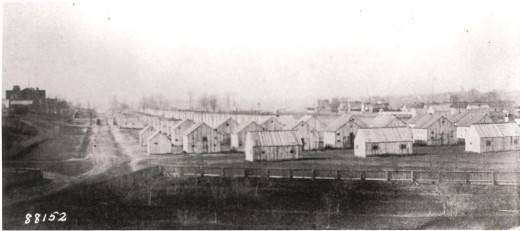
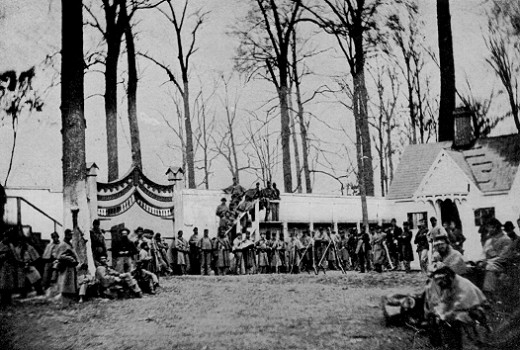
The troops were housed in Barracks which, if newly built, were long, one-room buildings. Otherwise, the Barracks were pre-existing structures, such as warehouses or the afore-mentioned government buildings. The sizes and shapes of the buildings varied greatly. Beds were simple cots arranged with the heads against the walls and feet toward the interior. A central aisle ran lengthwise across the building for the passing of the men and military instructors, very similar to today’s armed forces barracks.
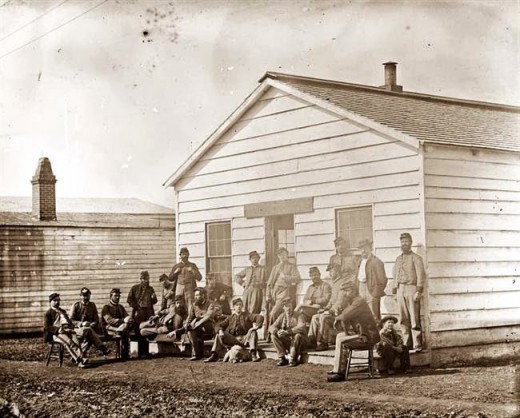
Each Camp of Instruction was established with Parade Ground and Drill Ground areas. These areas were needed for the new troops to learn the mysteries of close-order drill, in which the combat of the time was carried-out. Reviews by commanding officers and politicians also occurred there. These grounds could have been very irregular in terms of topography, clearance, and size.

Troops generally received their meals in a dining hall via a mess arrangement, where the food was prepared in large indoor kitchens for, and served to, the entire unit. Long wooden tables and benches served as the furniture at which the troops sat and ate their repasts.
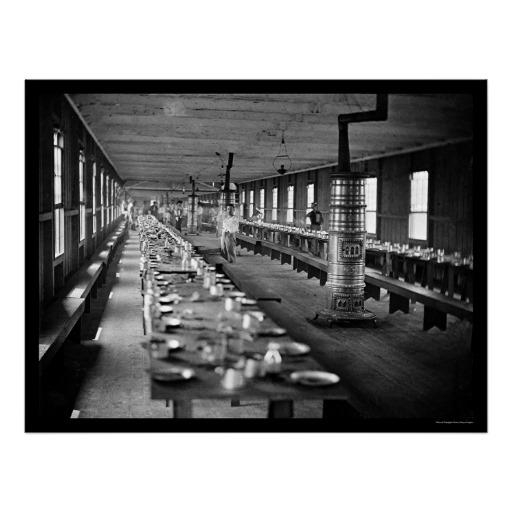
The time spent in Camps of Instruction varied. In ideal circumstances, the new units stayed in the Camps of Instruction until the commanding officers were fully satisfied with the performance of the men and believed they were ready to face the enemy. However, contingencies often caused units to spend much less time in Camp of Instruction than was normally advisable. Instead, many units were rushed to the battlefield. In other cases, units spent what seemed like interminable lengths of time in the Camp of Instruction.
While in this camp, the new troops eventually received their federal issuances of Army clothing, accoutrements, weaponry, and the training in how to use them. However, as mentioned in Filling The Ranks, the size of the United States Army at the time was about 15,000 men. Attempting to now supply a force that grew five times as large in 1861 caused supply problems of the first order. Men often did without the necessary equipments, or even regular distribution of food, for extended periods of time. Men learned to become soldiers while in civilian clothing. In some extreme cases, they were forced to beg for food from nearby citizens until more regular supply systems were established and maintained. Until muskets were issued, some units were issued thin wood planks as weapon stand-ins. The U.S. army later grew to more than half a million men, so supplying them all proved challenging throughout the War.
As was also previously noted in Filling The Ranks, the Volunteer soldiers in the United States Army were issued uniforms, weapons, and equipment that were surprisingly varied, depending on what was available at the time and on the source of the supplies. The supply sources, whichever they were (even if coming from a central source such as the state or federal government), didn’t guarantee actual uniformity in anything. Nor was there any guarantee of sufficient quality. The term “shoddy” was coined during the War, and was used to describe many issued items of clothing that fell apart very easily, sometimes from just a gentle rain! Thus, some units, especially within the first years of the war, were a “hodgepodge” of different styles and quality of uniforms, weaponry, accoutrements, etc.
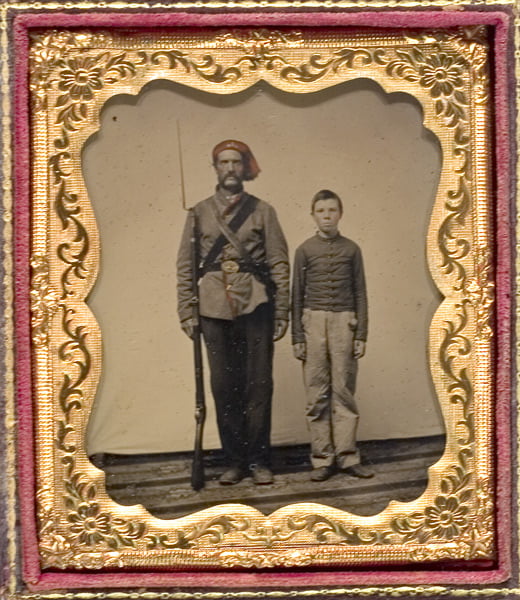
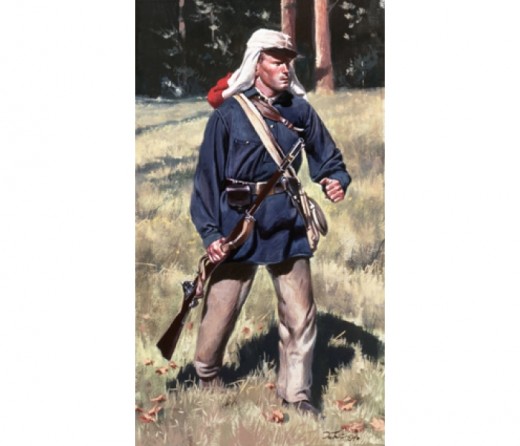
One thing a new Volunteer needed to do right away, upon the assembling of the Regiment, was get familiar with officers and their ranks. Officer insignia was worn on the shoulders and denoted their ranks. The insignia was a narrow, rectangular bit of stiff cloth with gold braiding about its border. The color of the field within the border determined the arm in which that officer served:
Infantry = light blue
Artillery = red
Cavalry = yellow
Black = officer was a general or a member of a general’s staff.
Designs within the field denoted the rank of the officer:
No Design = 2nd Lieutenant
1 Gold Bar at edges = 1st Lieutenant
2 Gold Bars at edges = Captain
1 Gold Oak Leaf at edges = Major
1 Silver Oak Leaf at edges = Lieutenant Colonel
1 Silver Eagle in center = Colonel
1 Silver Star in center = Brigadier General
2 Silver Stars in center = Major General
3 Silver Stars in center = Lieutenant General (not used in the Union Army during the war until 1864)
If “MS” was also within the field, it denoted that the officer was in the Medical Staff
If “QD” was also within the field, it denoted that the officer was a Quartermaster
If “PD” was also within the field, it denoted that the officer was a Paymaster
If “CD” was also within the field, it denoted that the officer was in the Commissary
For Non-Commissioned Officers, chevrons (shaped like a somewhat flat V, with the pointed end facing down) were worn on the sleeves, just above the elbow, to denote rank:
Double Chevron = Corporal
Triple Chevron = Sergeant
Triple Chevron with Lozenge (diamond-shape) = First Sergeant
Triple Chevron with Single Horizontal Bar = Quartermaster Sergeant of the Company
Triple Chevron with Triple Horizontal Bar = Quartermaster Sergeant of the Regiment
Triple Chevron with Star = Ordnance Sergeant
Triple Chevron with Triple Arch = Sergeant Major
Half Chevron with Medical Symbol = Hospital Steward
If a Volunteer Private re-enlisted after his three-year term expired, he was given a half Chevron to wear as a mark of honor. This indicated he was a Veteran Volunteer that served his original term and was serving again of his own free will.
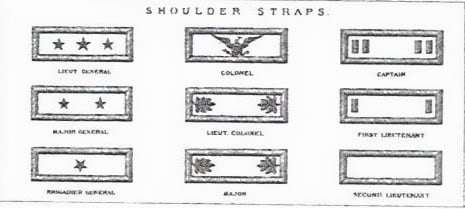
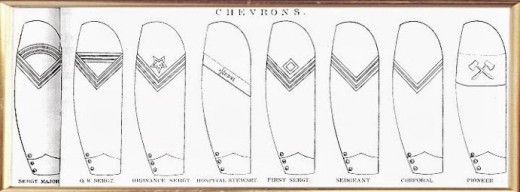
Period of Adjustment
For a new Volunteer, the adjustment to military life was a very difficult one to make, and most never fully acclimated. The way of life in the military was almost certainly foreign to him, if not utterly contemptible. Accustomed to hard work, he was nonetheless taken aback at any imposition of discipline, order, and lack of individuality when he reported to Camp.
A Volunteer needed to develop the discipline necessary for carrying out the duties of soldier and was required to heed, without question, orders from his superiors. This submission is not quickly learned even today, and this was no exception in the 19th century. Not a few duels or fistfights erupted when officers tried to impose their wills on Volunteers who had not yet mastered the art of discipline. Some Volunteers came to resent their given orders or even the very tone of voice used. The fact that many of these officers were men that, until recently, were equals back at home, made the situation that much less tolerable. The situation of free men, thrown into an environment of absolute leadership like the military, always came with the risk of explosive consequences, at least at times.
In short, Volunteers did not truly consider themselves soldiers. At that time, professional soldiers in the ranks (NOT the officers) were seen as being unthinking, unenlightened brutes, good for little else than making war. The incoming Volunteers did not want to carry that reputation with them! They considered themselves temporary soldiers, loaning themselves out to the government to perform soldierly duties during the time of crisis. After their terms of enlistment expired, they intended to go home. They did not want the total imposition of discipline of all things Army while they served. Many Volunteers were determined to maintain this pseudo-independence philosophy. If they believed they were at all unfairly treated, or badly led, they simply departed – deserted – and believed they had the perfect right to do so. A man was perfectly free to depart from an unlikeable job, and this mindset extended to his service as an Army Volunteer.
As the war ground on, most Volunteers grudgingly came to the realization that to adopt a more soldierly conduct was the most effective way to get the job done. A certain amount of discipline was needed, and obedience to regulations required, for units to get into the best condition of readiness and strength for the fighting ahead. And it was the fighting that would determine the outcome of the war. The Volunteers never really did become like the Regulars, but most became proficient enough in their duties to make their units formidable fighting forces nonetheless.
As mentioned before, many Volunteer units had officers from the same towns or city neighborhoods as the men in the ranks. Most of these officers were new to the army as well, so not all officers were completely draconian. Many were, in fact, very personable to the rank and file since most came from the same areas, perhaps even from the same social classes. They knew they would return to these same homes and occupations after the War. The thought among these officers was probably that life back home would be much more agreeable if they didn’t anger and alienate the neighbors that served under their commands during the War!
By contrast, the Regular Army officers, inevitably in command somewhere along the line, were often strict and unyielding. They were thoroughly indoctrinated into the army and commanded according to that creed. The better Regular Army officers, though, were sensible enough to realize that Volunteers were not like Regular Army troops. Volunteers needed treatment with a bit more tolerance and leniency since there was no time or capacity for true indoctrination into the army, and there was severe resistance to such attempts anyway. These officers realized they would be left with much diminished commands, and/or waste much time in disciplinary hearings, if they tried to make Regular troops out of Volunteers. Instead, they concentrated on effectively getting their Volunteer commands ready for battle and, if this meant not instilling a complete sense of discipline, so be it!
Afterword
The next article on this topic is called American Civil War Life: Union Infantryman - Life in Camp II; Tools of the Trade: Issuances of Clothing and Equipment.

